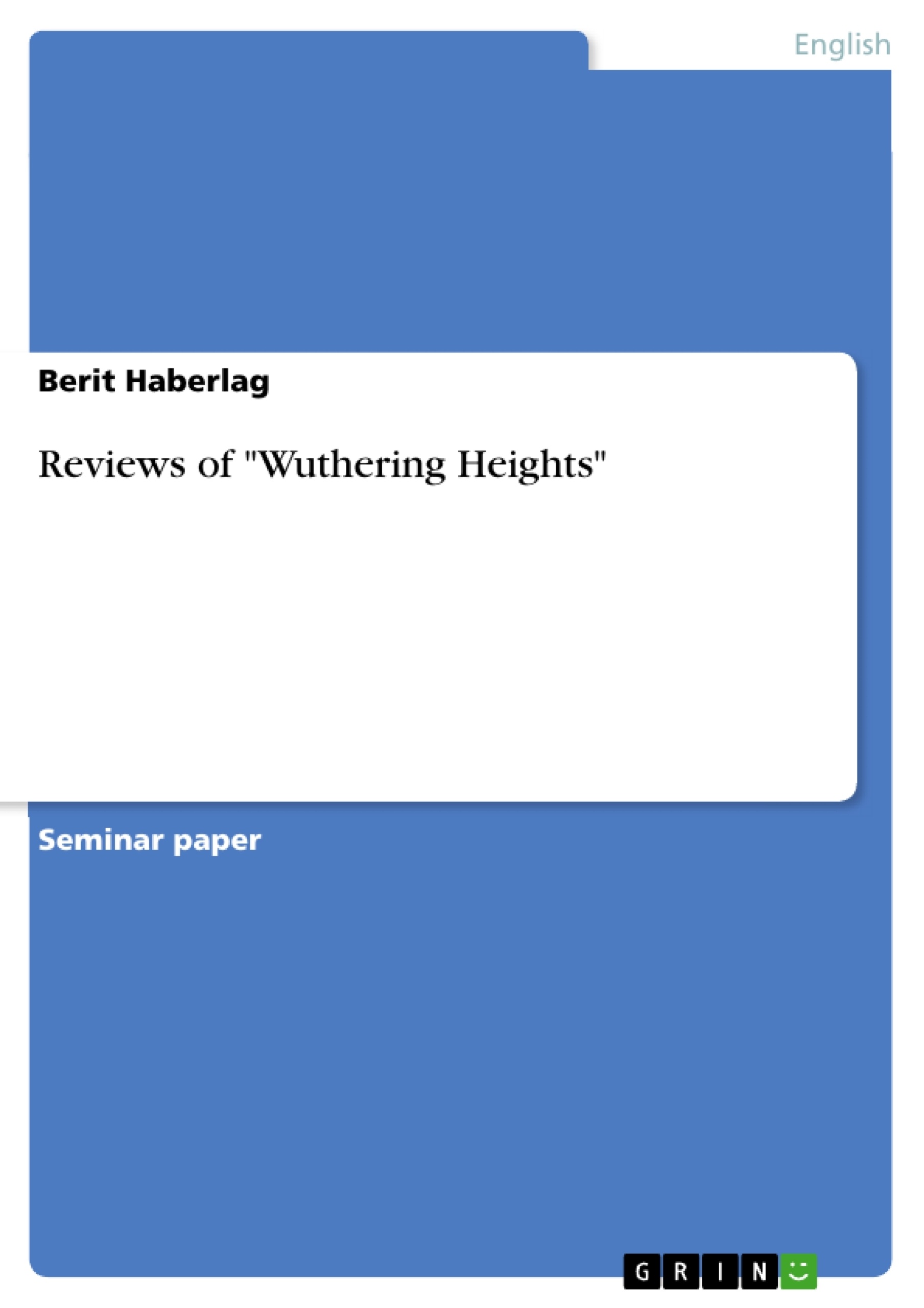»Wuthering Heights« is the solitary prose work of Emily Brontë and was first published in 1847. Although the novel is now generally considered a masterpiece, there were lots of negative reviews after the publication. Critics called it for example shocking, grotesque or mishappen and were horrified by it. In my work I will concentrate on the reviews of »Wuthering Heights« that appeared shortly after the publication of »Wuthering Heights« until the end of the 19th century. Firstly, I will give a short biography of Emily Brontë to illustrate her way of living. After that I will summarize her novel.
Following the summary of »Wuthering Heights« I will concentrate on the reviews of »Wuthering Heights«. At first I will present the way this novel was criticized by the reviewers in English as well as in American newspapers and magazines shortly after the publication in 1847. Then I will refer to Charlotte Brontë as a critic of »Wuthering Heights« and show how she judged her sister’s work. Furthermore her review influenced later criticism. In the end I will illustrate the later critical response to »Wuthering Heights« and I will show if there has been a change in judging the novel and how Charlotte Brontë’s preface influenced the reviewers.
Table of Contents
- Introduction
- Biography of Emily Brontë
- Summary of »Wuthering Heights«
- Reviews of »Wuthering Heights«
- Contemporary Reviews of »Wuthering Heights«
- Reviews that appeared in British magazines or newspapers
- American Reviews of »Wuthering Heights«
- Unidentified Review of »Wuthering Heights«
- Charlotte Brontë as a Critic of »Wuthering Heights«
- Later critical response to »Wuthering Heights«
- Contemporary Reviews of »Wuthering Heights«
- Summary
- Bibliography
Objectives and Key Themes
This paper examines the reviews of "Wuthering Heights" that appeared shortly after its publication in 1847. The author analyzes the reception of Emily Brontë's novel and tracks the critical response to it until the end of the 19th century. The work aims to understand the initial criticisms directed at "Wuthering Heights" and how they shaped the subsequent critical conversation.
- Early critical reception of "Wuthering Heights"
- Impact of Charlotte Brontë's critique on the reception of "Wuthering Heights"
- Evolution of critical perspectives on "Wuthering Heights" over time
- Influence of biographical context on the interpretation of "Wuthering Heights"
- Thematic exploration of love, revenge, and social class in "Wuthering Heights"
Chapter Summaries
The introduction provides a brief overview of "Wuthering Heights" and its initial reception, highlighting the strong negative reactions the novel received. It outlines the structure of the paper, focusing on the contemporary and later critical response to the novel. The second chapter presents a concise biography of Emily Brontë, exploring the influences that shaped her life and her work. Chapter three offers a summary of the plot of "Wuthering Heights," providing a framework for understanding the subsequent analysis of the novel's reception. Chapter four delves into the critical reception of "Wuthering Heights," focusing on contemporary reviews from British and American publications, as well as Charlotte Brontë's unique perspective on her sister's work. The final chapter examines the later critical response to "Wuthering Heights," exploring the evolution of critical interpretations and the influence of Charlotte Brontë's preface on subsequent evaluations of the novel.
Keywords
The central themes and concepts explored in this paper include Emily Brontë's biography, the novel "Wuthering Heights," critical reception, contemporary reviews, literary criticism, Charlotte Brontë's influence, social context, love, revenge, and social class. The analysis focuses on the impact of initial critiques on the enduring legacy of "Wuthering Heights," showcasing how early perceptions shaped its subsequent literary and cultural significance.
- Quote paper
- Berit Haberlag (Author), 2004, Reviews of "Wuthering Heights", Munich, GRIN Verlag, https://www.grin.com/document/41256



